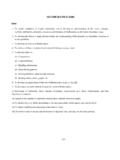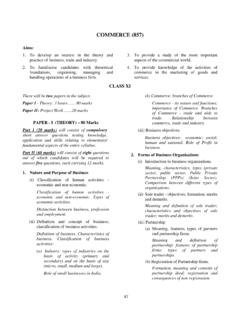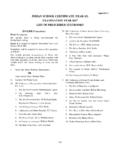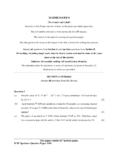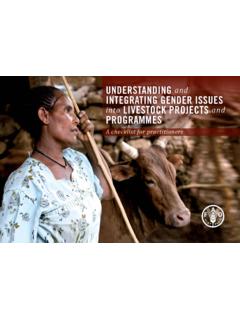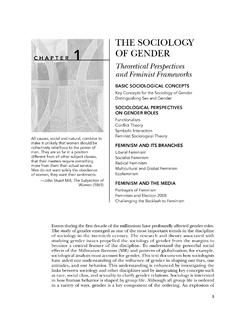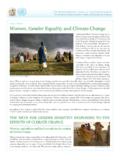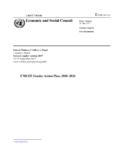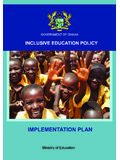Transcription of UNDERSTANDING THE CISCE CURRICULUM
1 Research Development and Consultancy Division Council for the Indian School Certificate Examinations New Delhi UNDERSTANDING THE CISCE CURRICULUM MODULE I YEAR 2017 Year 2017 _____ Published by: Research Development and Consultancy Division (RDCD) Council for the Indian School Certificate Examinations Plot No. 35-36, Sector VI Pushp Vihar, Saket New Delhi-110017 Tel: (011) 29564831/33/37 E-mail: Copyright, Council for the Indian School Certificate Examinations Introductory Note The CURRICULUM for Preschool to Class VIII, developed by the Council for the Indian School Certificate Examinations aims to bring about uniformity in the syllabi being transacted in all schools affiliated to the Council and to ensure that the basic minimum standards are maintained.
2 In addition to providing guidelines to schools that are newly affiliated to the Council, t he CURRICULUM also endeavours to provide a strong foundation at the elementary level and to facilitate upward mobility so that children derive full benefit of the ICSE and the ISC CURRICULUM . This Resource Material has been prepared to develop a better UNDERSTANDING on the CISCE CURRICULUM . It will serve as a supplement to the CURRICULUM and act as a ready reference material and guide for all stakeholders, including Subject Teachers, Master Trainers, Academic Coordinators and Heads of Schools.
3 The Resource Material includes a set of documents, which provide a broad UNDERSTANDING on the CURRICULUM , besides dealing with the teaching-learning strategies related to specific subjects at the Primary and the Upper Primary levels. We have made a beginning by preparing modules of Resource Material for selected subjects included in the CURRICULUM . It is hoped that over time, we will be able to supplement this Resource Material by developing subject specific modules on more subjects. I would like to express my special gratitude to Prof. Manju Jain ( Former Head, DEE, NCERT), Prof. Sandhya Paranjpe (Senior Consultant), Prof.
4 Anup Rajput (Head, DEE, NCERT), Prof. Kirti Kapoor (DCS, NCERT), Prof. Dharamprakash (DEE, NCERT ), Dr. Dahiya (Senior Lecturer, Retired, SCERT, Delhi) and Dr. Satyavir Singh (Principal, SNI College, Pilana, Baghpat) for their valuable contribution in developing this Resource Material. I would also like to acknowledge the teachers, from schools affiliated to the Council, who have been an integral part of this exercise, whose inputs and feedback has helped shape this document. Last but not the least, I appreciate the efforts put in by Mrs. Shilpi Gupta, Deputy Head (RDCD) in preparing this document along with her team of Dr.
5 Manika Sharma, Dr. Gandhi, Ms. Mansi Guleria and Mrs. Roshni George. Gerry Arathoon Chief Executive & Secretary UNDERSTANDING the CURRICULUM 1 MODULE-I Content Outline Section 1:OverviewSection 2: Need, Context and Scope of the present curriculumSection 3: Paradigm shifts and salient features of the curriculumSection 4: CURRICULUM organization: Major components of the CurriculumSection 5: Assessment of LearningSection 6: Recording and Reporting 7: What the CURRICULUM users need to know? UNDERSTANDING the CURRICULUM 2 Structure of the Module I : Overview: The Why, What and How of this module : Need, Context and Scope of the present CURRICULUM : Paradigm shifts and salient features of the CURRICULUM : CURRICULUM organization: Major components of the CURRICULUM Outcomes Concepts Resources Processes Planning Implementation Assessment for Learning : Assessment of Learning between assessment for and of learning as learning to frame questions : Recording and Reporting processes procedures Reporting procedures.
6 What the CURRICULUM users need to know Expectations of this Module The user will be able to: understand the need and the context of the CURRICULUM developed by CISCE . discuss the salient features of the CURRICULUM and their implications. understand the scope of the CURRICULUM at preschool, primary and upper primary levels. explain the need of Key Concepts , Learning Outcomes and appropriate Learning Resources in the teaching-learning process. discuss various classroom strategies for CURRICULUM transaction. discuss the importance of assessment for learning in improving child s learning. understand assessment practices and evaluation procedures for achieving learning outcomes at specific levels.
7 Discuss the various essentials for the CURRICULUM users. UNDERSTANDING the CURRICULUM 3 Overview: The Why, What and How of this module Why this module: The primary purpose of this module is to develop an UNDERSTANDING on the present CURRICULUM developed by CISCE for pre-school, primary and upper primary levels. It has been designed to address the needs of various stakeholders. The module aims to acquaint users with the need and context of the present CURRICULUM , its salient features, the different components of the CURRICULUM , the pedagogical processes and the learning resources suggested in the CURRICULUM along with various kinds of assessments and the assessment practices to be followed for the primary/upper primary levels.
8 In addition, this module will also provide opportunities for practical experiences through various activities and assignments. What does the module include: This module has seven sections. Section 1 provides an overview (why, what and how) of the module. Section 2 presents the need, context and scope of the CURRICULUM , while Section 3 highlights the salient features of the CURRICULUM . The major components of the CURRICULUM have been discussed in Section 4. Section 5 deals with various assessment practices to assess the learning outcomes. Recording and reporting procedures required for CURRICULUM implementation have been discussed in Section 6.
9 Section 7 covers some practical tips for CURRICULUM users. How to use this module: The present module is meant for all stakeholders in general and for practitioners in particular. Before reading/ attempting the other modules of this document, this module needs to be read carefully, as this would give an overall picture and UNDERSTANDING of the present CURRICULUM . In all sections of this module, some assignments/ activities have been given. These should be done after studying the relevant sections of the module. Apart from the mentioned assignments, in each section, activities have also been planned, to provide hands-on experiences for developing Learning Outcomes and framing questions.
10 Some practical tips for planning, implementing and assessing the teaching-learning plan have also been provided. Let us do Activity 1: Open discussion Give any two reasons why this module could be useful for: Practitioners Master Trainers Academic heads UNDERSTANDING the CURRICULUM 4 Need, Context and Scope of the present CURRICULUM Ever since the National Policy on Education (NPE) was approved by the parliament, consistent efforts have been made by various institutions, agencies, councils and boards of school education across the country to review, revise and design their CURRICULUM in order to achieve the national goals of education in general and to provide quality education to all in particular.
